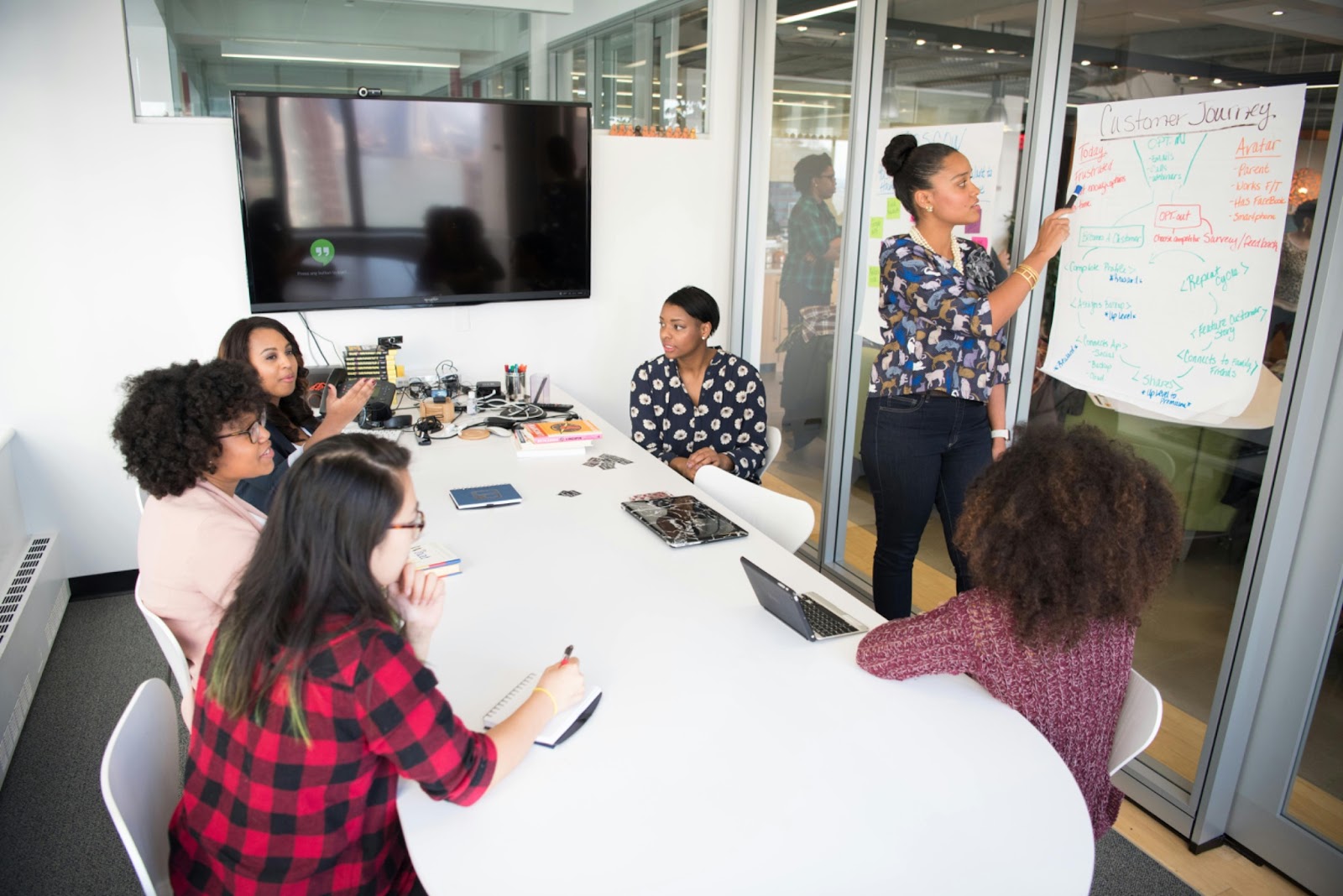How do I organize a team meeting?

Steve Jobs said:” The best things that happen in business aren't the result of one man's work. It is the work of an entire team. ”. La team meeting is a structuring moment in collective life in companies. It makes it possible to circulate information, to strengthen the communication internal and to better coordinate actions.
Among the different types of meetings, it is it that is used to share progress, discuss bottlenecks and build common decisions. Well done, it reinforces the cohesion and commitment of employees. However, all corporate meetings are not equal. Too long, poorly prepared, poorly animated, some lose their impact.
So how do you transform these internal meetings in real levers of efficiency? What steps to follow to organize a meeting with the team clear, dynamic and action-oriented? What elements guarantee necessary meetings, structured and well monitored?
Here are the best practices for designing a Group meeting useful, motivating, and productive.
Why does regular team meetings improve collective performance?
Align team goals and priorities
Les team meetings provide a regular framework for harmonizing goals and priorities. They allow participants to clarify expectations, allocate resources, and adjust schedules. Thanks to these regular meetings, everyone knows where to focus their efforts. The team moves forward in a coherent manner, with better coordination and without dispersion.
Identify obstacles and monitor progress
This time of exchange is also essential to take stock of progress. Les participants can share deliverables completed and report the deadlocks. Concrete data makes it easier to decisionmaking, avoiding assumptions. For example, if a member reports a delay in a deliverable Importantly, the team can react quickly and reorganize tasks. The project thus maintains a controlled pace.
Strengthen the commitment and motivation of employees
Beyond the operational aspect, these meetings nourish the group dynamics. Les meeting participants see their ideas recognized and measure the impact of collective work. One framework of trust encourages exchanges and mutual aid. When successes are celebrated and challenges shared, individual commitment intensifies. The team then approaches the next challenges with renewed energy.
Meeting planning: save your entire team time
A solid scheduling meetings creates the essential framework for organize a meeting efficiently and without wasting time.
- Define a structured and shared agenda in advance: Before prepare for a meeting, you have to Define goals of the meeting and of each item to be discussed. One agenda clear, broadcast as soon as the invitation arrives, sets the tempo and keeps the team focused on what matters most.
- Selecting the right participants to avoid meetings: Adjust the number of participants Depending on the persons concerned, limit digressions. This targeted selection varies according to types of meetings and saves time for the entire organization.
- Choose the right format according to your needs: face-to-face, remote or hybrid, the choice depends on the objective, budget and availability of a boardroom adapted.
- Prepare presentation materials and tools: summary slides, monitoring tables or shared documents are collected during internal preparation meetings. Everyone therefore has the same data when deciding.
When a team meeting involves strategic issues or long-term goals, a pre-planning session may be necessary. It is estimated that over 70% of corporate meetings are considered unproductive. However, simple organization is often enough to turn the tide.

How to structure and facilitate a team meeting?
For a meeting to have concrete effects, it is not enough to plan it; it is also necessary to conduct it well. One effective meeting is based on a clear structure, a Facilitating meetings dynamic and shared decisions. Each step of the Outline of the meeting team contributes to its impact.
- Introduce the meeting and validate the agenda: From the start, theanimator must set the framework: why are we meeting today? What are the expected results? Clarifying the issues promotes concentration and aligns all participants with current priorities. This step sets the tone for Conducting meetings.
- Take a quick tour of the table on the previous actions: One Round table short but structured allows you to review the actions decided during the previous meeting. This moment of exchange allows you to value your efforts, identify bottlenecks, and find solutions if necessary. It's also a way to involve all parties from the very first few minutes.
- Animate and energize exchanges: THEanimator can rely on various animation techniques (brainstorming, whiteboarding, or interactive tools). It ensures that everyone can Take the floor in a constructive environment, while taking care not to stray from the goals.
- Making concrete decisions and distributing tasks: The team must make decisions concrete, assign responsibilities and set realistic deadlines. Each point treated must end with a validated action.
- End with a clear and engaging summary: At the end of the meeting, theanimator should summarize the essentials (decisions taken, tasks assigned, deadlines to be respected). Closing with an engaging message or a perspective on the next step reinforces motivation and gives momentum to collective work.
Structure and Facilitate a meeting with method makes it possible to transform a simple moment of exchange into a real lever for decision, coordination and commitment.

What tools should you use for productive team meetings?
In business, choosing the right supports, platforms and animation methods makes it possible to prepare the participants to the decisions and actions to be implemented. Whether for project meetings, technical points or work meetings common, digital solutions are often favoured.
Task management and tracking tools
To ensure concrete follow-up after the meeting, project management tools have become indispensable. Platforms like Trello, Asana or Notion allow you to centralize decisions made, distribute tasks and monitor collective progress. As part of project meetings, they serve as a natural extension of the session by keeping a clear record of the actions taken. These tools also help organize and animate the following meetings by quickly identifying the topics to be taken up again.
Collaborative tools to facilitate co-construction
During the exchanges, the collaborative tools are essential to the engagement of participants. Miro, for example, makes it possible to organize very effective visual brainstorming sessions. Google Docs makes it easy to take notes in real time and co-write documents. These solutions are particularly useful in video conferencing, where distance can hinder interaction. Their flexibility makes them compatible with various types of meetings, from weekly team meetings to one-to-one.
Animation techniques to stimulate participation
To maintain attention and promote everyone's expression, it is essential to use adapted animation techniques. Tools like Mentimeter or Slido make it possible to offer surveys, gather ideas or vote anonymously. Coupled with Slides clear and well-structured, these devices make the meeting more interactive and more engaging. They also make it possible to better pace the exchange times and to obtain immediate feedback on the points discussed.
How do you ensure follow-up and implementation after the meeting?
One meeting is organized to produce concrete decisions, but its effectiveness depends on what happens next. Sans Follow-up of meetings, even the best of intentions can go unheeded.
Write a summary and actionable report
The minutes of the meeting should be distributed quickly, in a short and clear format. He must take over the decisions taken, list the expected actions, designate those responsible and set deadlines. Of reports well-written documents also make it possible to effectively prepare the next team meeting, based on factual evidence.
Follow the actions decided upon with clear indicators
Once the action plan launched, it is essential to implement structured monitoring. Tools like dashboards allow you to visualize current tasks, deadlines, and expected deliverables. The use of simple but relevant indicators facilitates the assessment of progress and the detection of delays.
Organize a regular follow-up point to measure results
In addition to team meetings, schedule regular follow-up with a steering meeting Or a evaluation meeting allows you to review the actions taken and to adjust if necessary. These meetings ensure continuity in implementation and reinforce coherence between successive meetings. For example: a project team can set up a follow-up point every two weeks to make the link between the decisions taken and their implementation.

Conclusion
La Team meeting is a real collective management tool. For one Be a successful meeting, she must register in a organization of meetings rigorous, with clear objectives, structured animation and a effective follow-up.
Each Meeting should be designed as a useful time, oriented towards decision-making and collective mobilization. Thus, there are different types of meetings, each meeting a particular need:
- The back-to-school meeting: it relaunches the collective dynamic at the beginning of the period;
- The CSE meeting: it brings together management and staff representatives to discuss working conditions;
- The meeting between specialists: it allows experts to deepen a technical subject;
- La Information meeting : it is used to transmit messages without debate;
- La training meeting : it aims to develop the skills of the participants;
- La commercial meeting : it takes stock of sales objectives and actions;
- La corporate meeting : it includes formal exchanges in the professional context;
- The codir meeting: it brings together managers to pilot the strategy;
- La Kick-off meeting : it officially launches a project with the stakeholders;
- The crisis meeting: it makes it possible to manage an urgent and sensitive situation;
At the end of the session, it is essential to Remind participants the commitments made, of synthesizing decisions and to lay the groundwork for the next meeting.
Well hold this meeting, means allowing the team to project itself, to act with coherence and to progress together.
Do you need a responsive location for your meetings? Discover our modular spaces in Paris